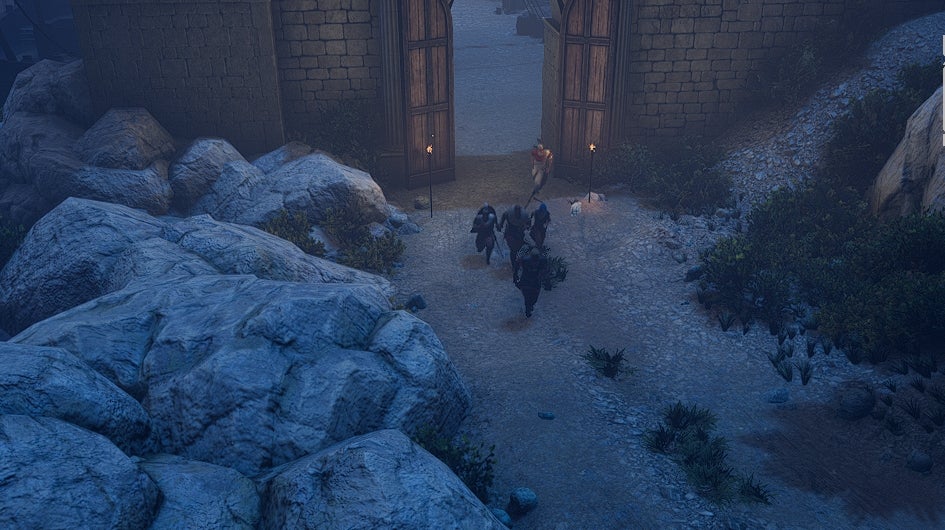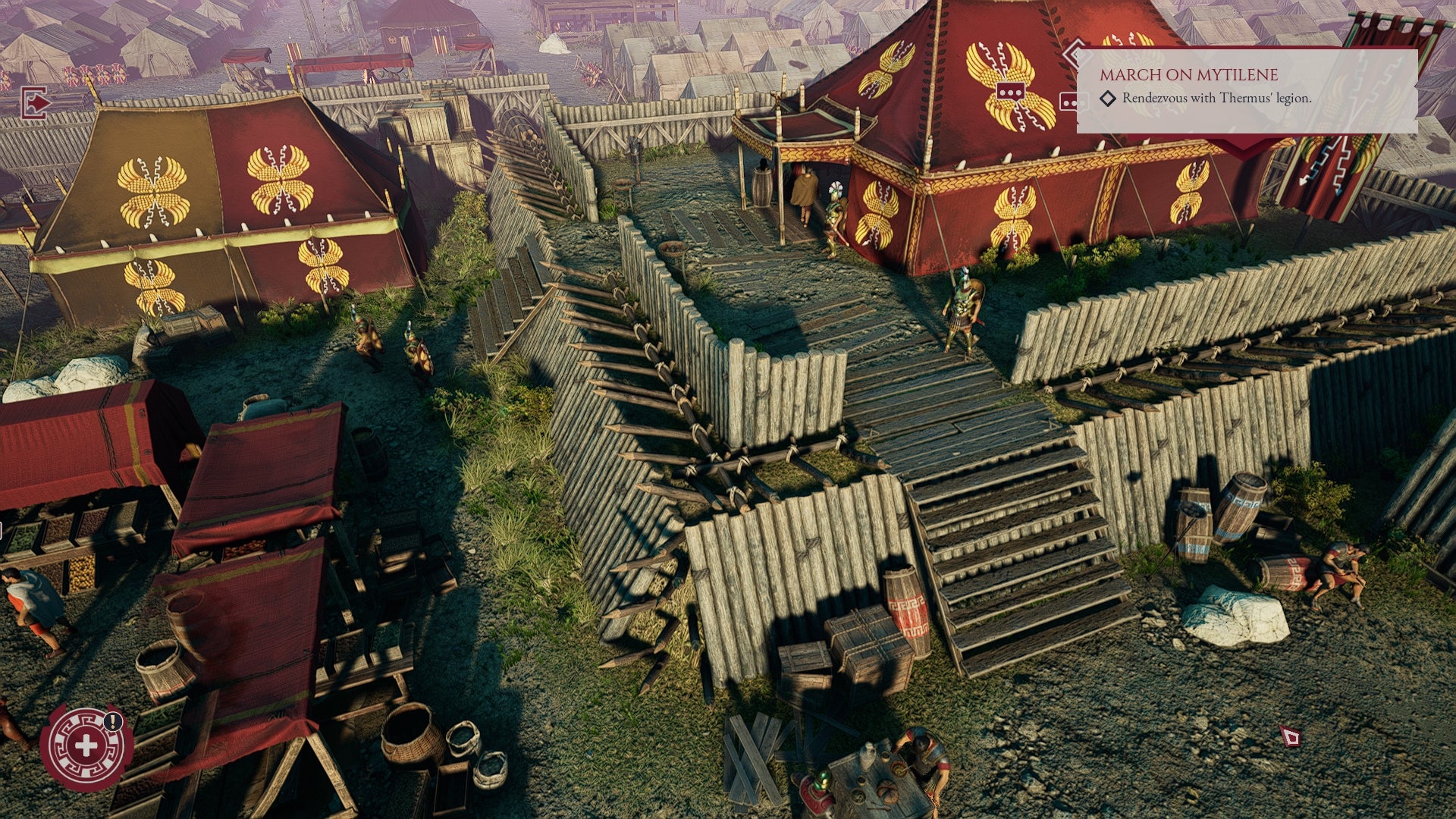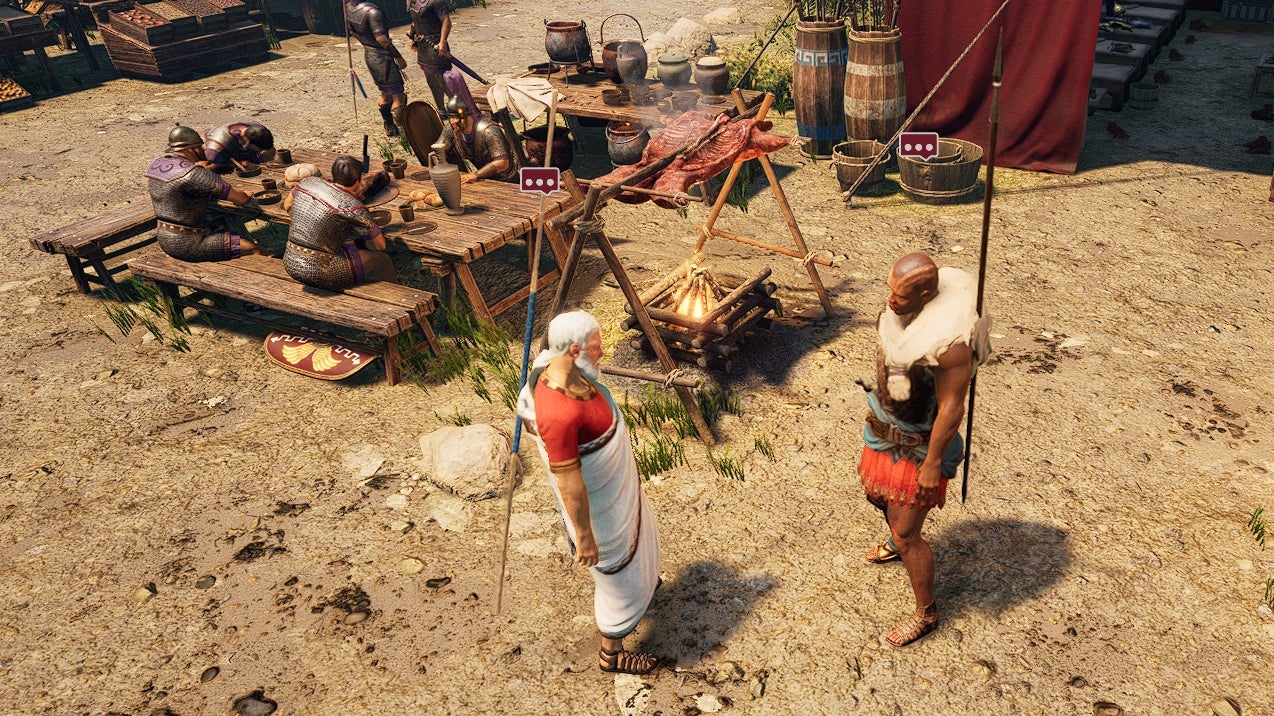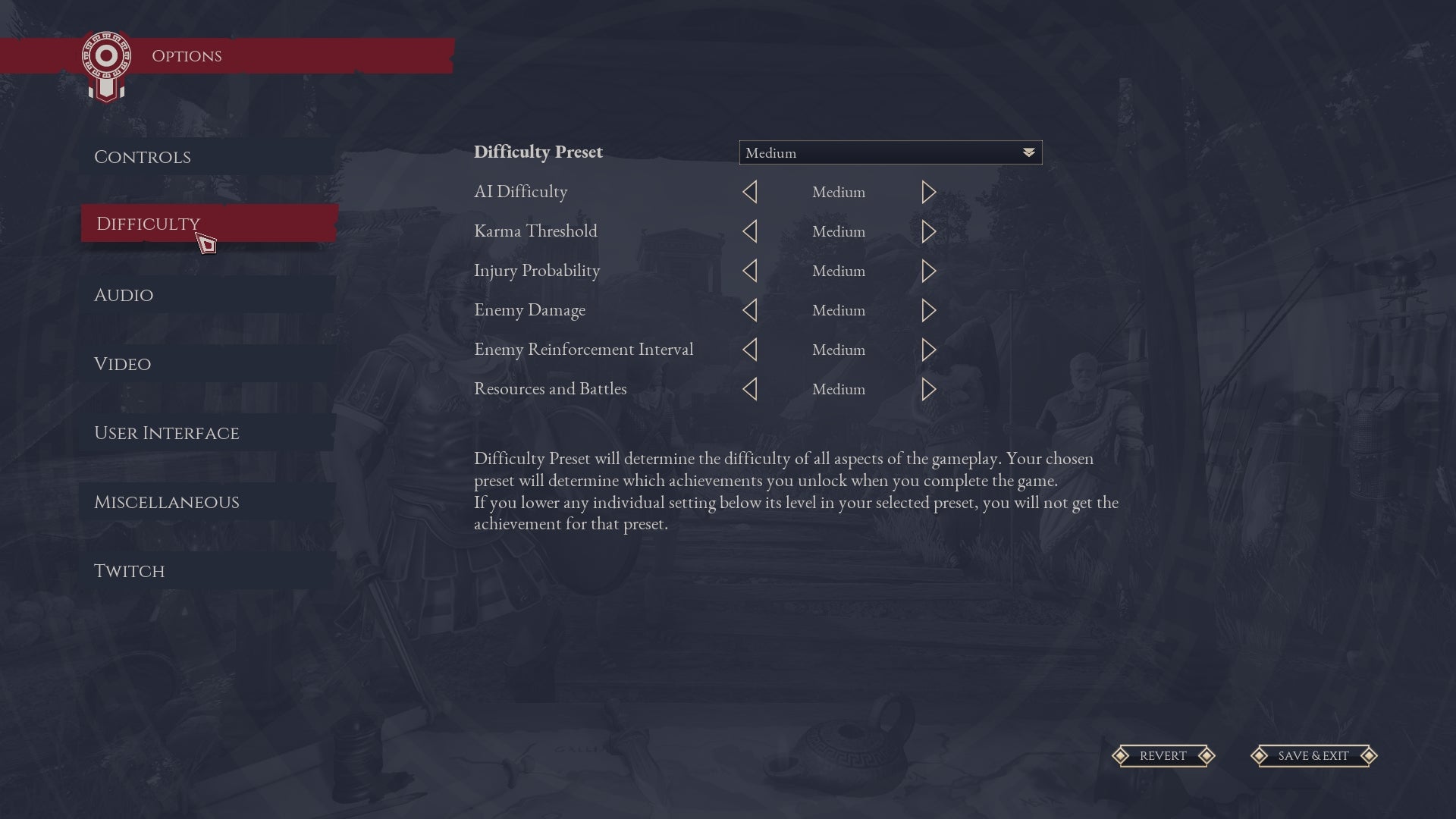Products You May Like
I used to think that big, intricate character customisation systems were pretty much mandatory for decent CRPGs. As I saw it, the ability to conjure up a hideous goblin man with a chin curving back up into his face, if you wanted to, was a sign that you were playing something in the big leagues. Now, however, I am not so sure.
Expeditions: Rome, a historical CRPG blending turn-based combat, strategic army management, and lots of dialogue, has a pretty rubbish character creation system. There’s bugger all you can really do to customise your Roman. and after the mammoth character forge of Pathfinder: Wrath Of The Righteous, for example, it all just feels very sparse and shoestringy. And that is a damned shame, because when it gets down to business, this is a seriously good – and lovingly detailed – romp through centurion times.
Honestly speaking, I’ve not had my brain do a 180 on a game so pronouncedly in a long while, as for whatever reason, Expeditions: Rome really frontloads all of its mediocrity into the first half hour or so of play. The story – you’re a young aristo who has been sent away to be an officer in the legions while a bout of stabbin’ fever blows over back in Rome – is perfectly solid, but presented in such a way that you don’t feel immediately gripped by it. Then there’s the tutorial fight (a scrap with pirates) which feels like it’s going to be the start of a fairly stultifying learning curve.
And then, just as you’re losing the spark of it all, the game just… lets rip. I remember the exact moment I realised I was having a grand old turn-based time: it was during the second of ER’s main combat missions, which sees your (admittedly fairly uncustomised) Roman take a bunch of four mates into an enemy city, intending to burn down some big wooden ships.
Some dialogue options at the battle’s outset offered two significantly different ways to approach the encounter. I could either sneak into a better starting position, then fight my way to the two ships I needed to burn… or just set one on fire immediately, getting half the job done off the bat, then trying to squeeze one more dose of nautical arson into the ensuing chaos.

Naturally, I chose the noble “fuck around and find out” stratagem, and what followed was simply a refreshingly brilliant bit of level design. The game did what any good GM does for players in a tabletop RPG; it presented a combination of physical space and tactical options in such a deft fashion that, when everything came together in the heat of the fight, it made me feel like a tactical genius for making the pieces fit.
Pitted against a harbour swarming with angry Greek soldiers, my hopelessly outnumbered little Romans lobbed incendiary pots to sow chaos among their opponents, while at the same time blocking off the chokepoints through which fresh Greek reinforcements were seeking to come and do some murders. Every one of my five praetorians got to use every one of their special skills to secure a clutch victory during the fight, and it was a real thrill moving them across the docks in a wild, NFL-style touchdown run, rather than the plodding “find the men and wipe them out” template which so many turn-based tactics games boil down to.
I was rapidly grabbed by a sense of “what’s this mad bastard going to serve me next?”, which kept me in my seat
The very next mission saw me thrust into command as the army my squad were marching with was ambushed horribly in a deep canyon. As a dozen or so friendly units fought a dozen or so enemies (with clever sound and map design giving the impression of a battle ten times the size), my praetorians had to fight their way through the bloodshed to rescue our general, and then beat a retreat to the exit as fresh baddies poured in from the valley sides.
It was another cracking bit of level design, and the hits kept coming. I was rapidly grabbed by a sense of “what’s this mad bastard going to serve me next?”, which kept me in my seat long enough that the less flighty parts of my brain could take their time to settle in, marinate in the story and the characters, and explore the game’s wider set of features.
It is a wide, wide set. At its most basic level, Expeditions: Rome alternates between fights, and bits where you walk around a strikingly realised Roman military camp, having chats with people. A young Julius Caesar is there, being a sort of bullied nerd. It’s great. Soon, however, you’re put in the position of actually managing the camp – and the entire legion residing there – in a sort of megagame which involves choosing stratagems for field battles, conquering territories, and trading resources. There’s also a lot of politics to get stuck into, via good old branching dialogue sequences.

Everything meshes together with the ongoing development of your personal squad of Praetorians, and the missions they undertake, in a web of connected systems which I could have a miserable time describing in detail, and you could have a miserable time reading and not quite grasping. So, just… take my word for it, basically. When I previewed ER last year, I was skeptical the game would manage to make you feel like you were commanding a legion during the moments between the turn-based fights at its core, but the power fantasy genuinely works.

Ave, Citizens!
Expeditions: Rome goes extremely hard on Roman minutiae, right down to the way characters not only throw little nuggets of conversational latin into their patter, but use the (probably) original pronunciation to boot, leaving you wondering who the hell yoolius kaiyeyzer is.
With that said, ER is a much, much larger game than I had been expecting (it looks like it’s going to take me 40-hours-plus to finish), and I’m at that point you reach in a very long, complex game where you’re not certain which mechanics are still being ramped up bit by bit, and which are in full swing. If anything, I’d say the large-scale, command-at-a-distance legion stuff has the most potential to run out of juice before the end. It’s far from a simple minigame, but at the end of the day, grand strategy just isn’t what Expeditions: Rome was ever going to be built around.
What is getting old fast, however, is all the bloody mooching about. ER has taken some commendable steps in abstracting some traditional RPG bullshit. When looting corpses after a fight, for example, you can just hit a single “ghoulishly rifle through every pocket on the battlefield” button, saving the need to faff about with a whole string of dead bloke inventories. There’s also a really smart set of difficulty settings, allowing you to tune aspects of the game which are pinching your bum a bit too often, while retaining the challenges you enjoy.

For all these little improvements, though, the time-honoured pursuit of watching a party of adventurers sprint across a map at a snail’s pace has been left untouched. And I know this might seem like a petty thing to complain about, but I’m dead serious. As I’ve stressed, between its surprising and inventive level design, its genuinely compelling character writing, and its various interlocked secondary games, Expeditions: Rome keeps you in a constant state of looking forward to what comes next. And unavoidably, that excitement dampens fast when you’re just sitting there waiting for people to move across a map.
It sags especially when they’re taking dreary detours around whole sections of wall to reach the one place where they can climb over. Or when they’re taking it in turns to clamber over said traversal point like a herd of frightened granddads. Or when they’re glitching the fuck out in trying to navigate a seemingly innocent kerb, leading to weird, haunted Tony Hawks shit with centurions leaping off invisivle ledges in mid-air.
That’s honestly just about all that’s getting me down, though. And, I suppose, the fact that I couldn’t make my main bloke look like Ghoastus, the objectively best Roman. But then, like I said at the start, character customisation is overrated.
